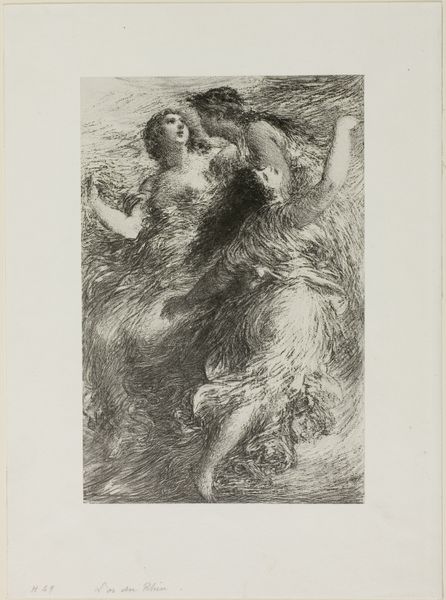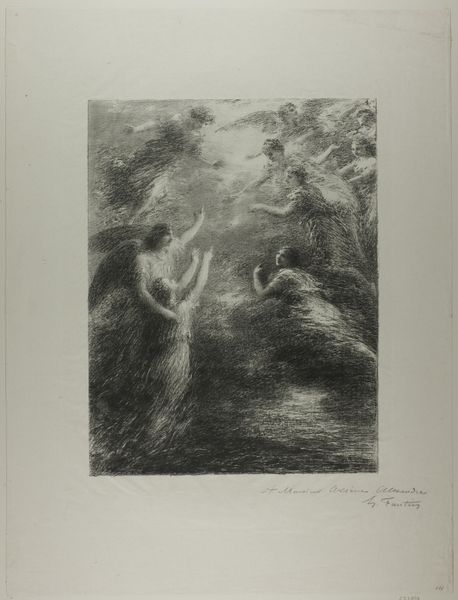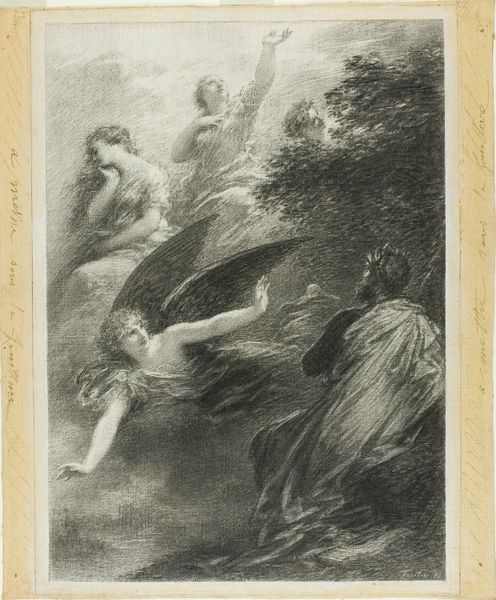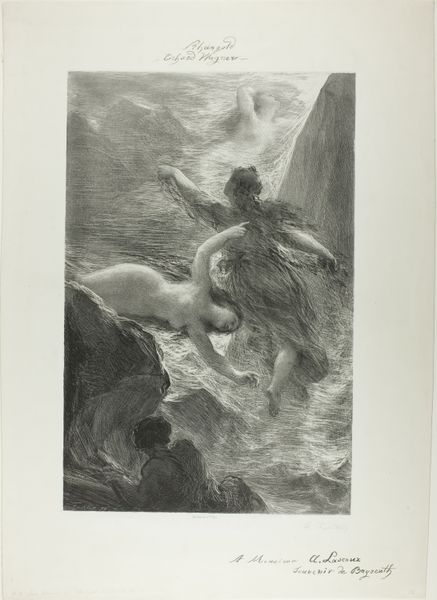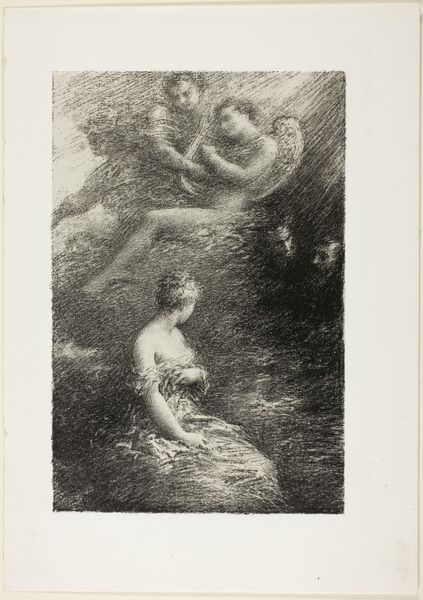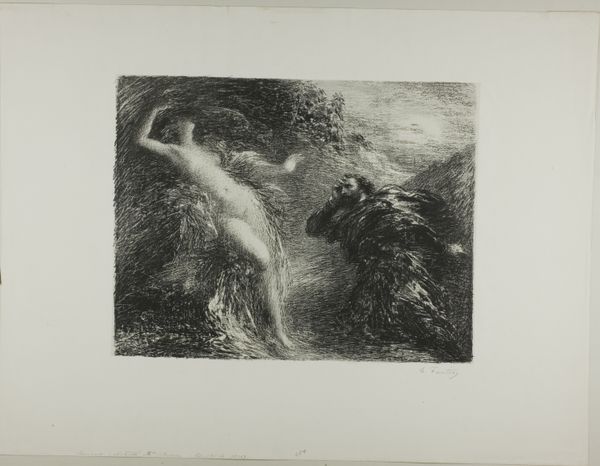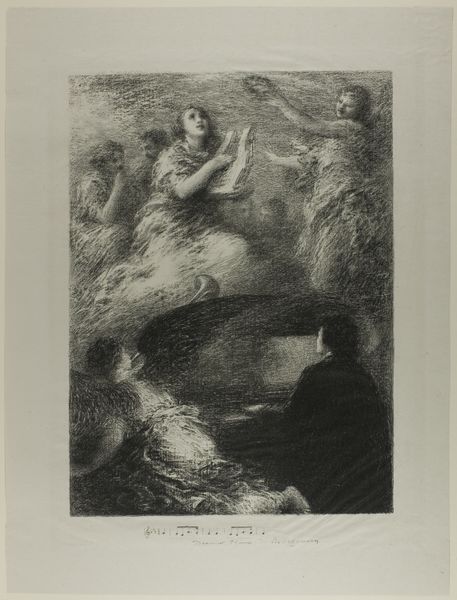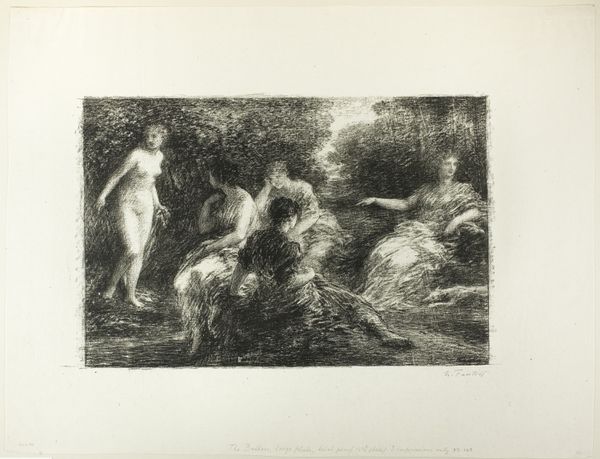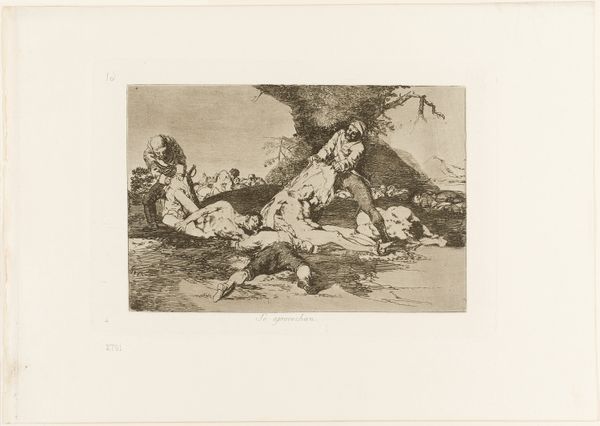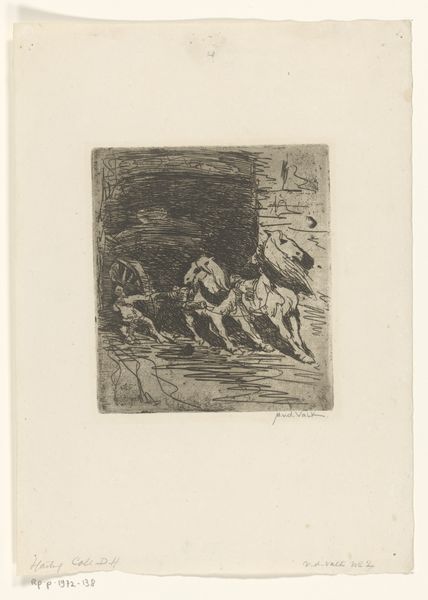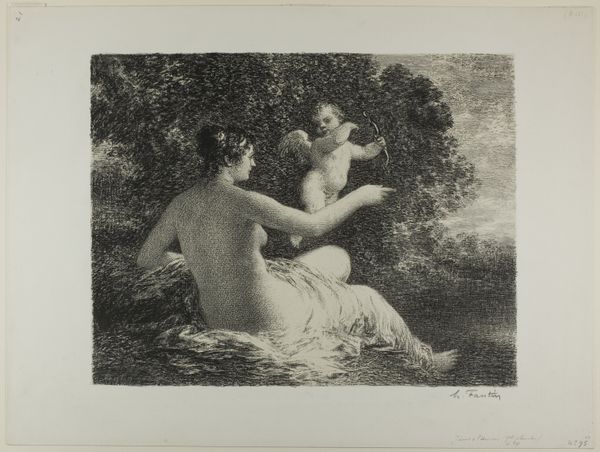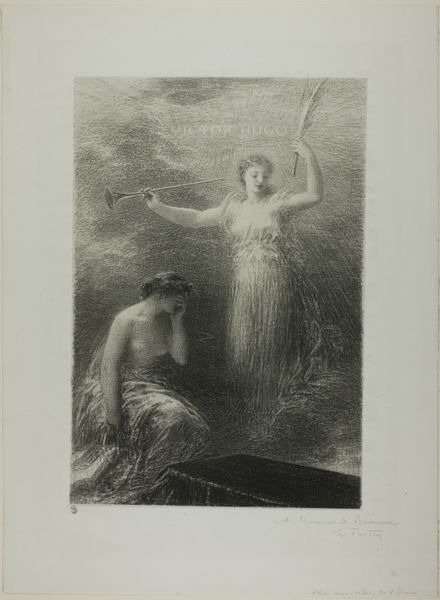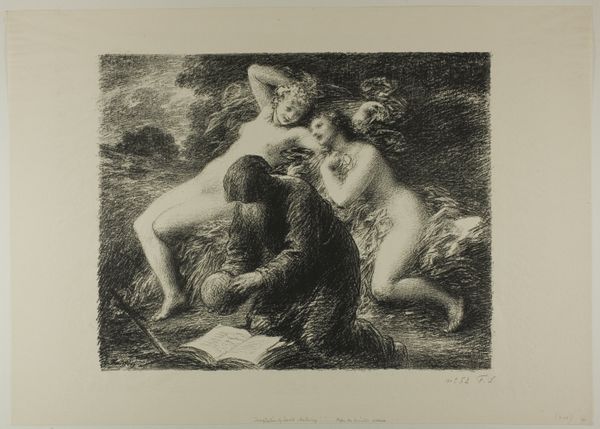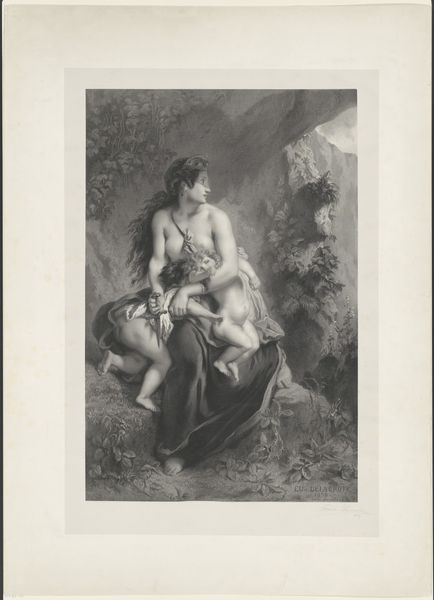
drawing, lithograph, print, paper
#
drawing
#
lithograph
# print
#
landscape
#
figuration
#
paper
#
charcoal art
#
pencil drawing
#
france
#
symbolism
Dimensions: 438 × 300 mm (image); 646 × 497 mm (sheet)
Copyright: Public Domain
Editor: This is Henri Fantin-Latour's "Finale to the Twilight of the Gods," a lithograph from 1892. The swirling lines give it a dreamy, almost melancholic feel. What do you see in this piece? Curator: Beyond the surface, I see a commentary on power, gender, and representation rooted in Wagnerian opera. Consider the female figures: How are they positioned in relation to the ‘gods’ and the overall narrative of destruction? Fantin-Latour, a man of his time, engages with complex ideas about femininity, agency, and societal collapse. What’s striking is the visual language. Do you see how he uses light and shadow? Editor: Yes, there's a real contrast. The figures are highlighted, but the background seems darker, almost ominous. Is he critiquing the traditional heroic narratives, perhaps? Curator: Precisely! Think about the title itself - "Twilight of the Gods." The piece asks, What happens when the established power structures crumble? And who is left to bear witness? The female figures, in their varied poses, become central to this question, suggesting alternative readings of heroism and resilience in the face of destruction. How do their bodies tell a story of power? Editor: I guess I hadn’t thought about the female figures as being central, but I see what you mean. They are the ones surviving, or at least witnessing, this 'finale'. I thought this was only a Romantic landscape. Curator: Landscapes are rarely neutral. Considering the historical context, late 19th-century anxieties about modernity, the rise of feminism, and shifting class structures become subtly woven into the artwork, disrupting simplistic interpretations. The landscape and the figures aren't just pretty; they're politically charged. Editor: This really gives me a lot to think about. I never realized the depths to which social issues could be embedded in a piece like this. Curator: Absolutely, and understanding those layers is essential to responsible art historical engagement. We bring historical pieces into conversation with contemporary concerns.
Comments
No comments
Be the first to comment and join the conversation on the ultimate creative platform.
